Essential Tips to Prevent Powerlifting Injuries
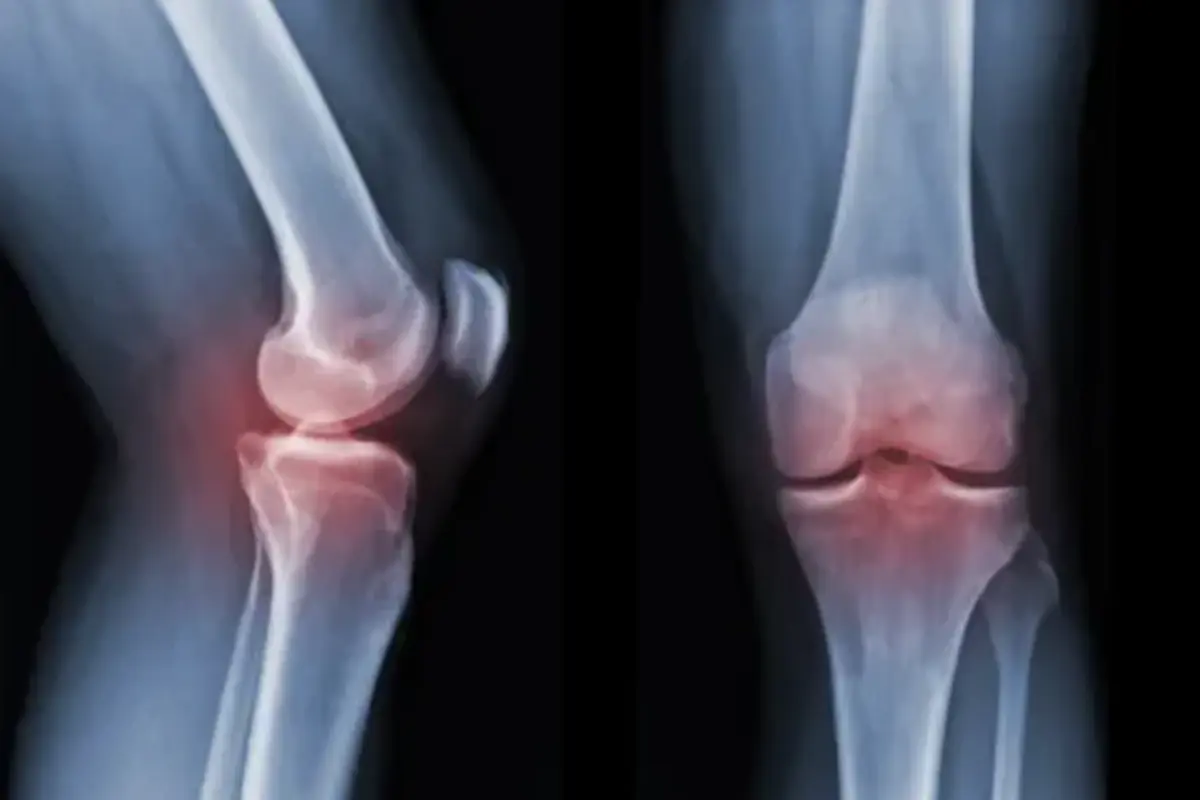
What's In This Article
- Key Highlights
- Introduction
- Common Powerlifting Injuries
- Critical Principles of Injury Prevention
- In-Depth Prevention Strategies
- Additional Resources and Training Aids for Injury Prevention in Powerlifting
- Conclusion
- Frequently Asked Questions
- References
- Resources
Key Highlights
- Importance of Proper Form: Incorrect squat, bench press, and deadlift techniques can lead to severe injuries. Maintaining proper form prevents knee, shoulder, and lower back injuries.
- Squat Injuries: Common issues include knee injuries, like patellar tendinitis, and lower back strains. Proper knee alignment and a neutral spine are essential for injury prevention.
- Bench Press Injuries: Shoulder injuries, such as rotator cuff problems and elbow stress, are prevalent. Ensuring proper shoulder positioning and elbow alignment can mitigate these risks.
- Deadlift Injuries: Lower back pain and hamstring strains are common. Maintaining a neutral spine and strengthening the posterior chain are key preventive measures.
- Injury Statistics: Approximately 43% of powerlifters experience lower back injuries, and 36% suffer knee injuries, highlighting the importance of proper technique and form.
- Preventive Strategies: Tailored advice for each lift includes maintaining knee alignment in squats, shoulder stabilization in bench pressing, and spinal alignment in deadlifts. Specific exercises like goblet squats, face pulls, and Romanian deadlifts can enhance safety.
- Training Aids: Using weightlifting belts, knee sleeves, and lifting shoes can provide additional support and stability, reducing injury risk.
- Role of Coaching: Personal and online coaching, along with video analysis, can provide essential feedback on form and technique, significantly reducing the risk of injury.
Introduction
Powerlifting, a sport that tests the ultimate limits of strength, similar to Olympic weightlifting, revolves around three fundamental lifts: the squat, bench press, and deadlift. These exercises are the cornerstones of competitive powerlifting. They are widely recognized as foundational for building maximal strength, strength, and muscle mass.
Their popularity and effectiveness, however, come with a caveat. Due to the intense nature of these lifts and the heavy loads involved, the risk of injury, if not executed with proper form and technique, is notably high.
Jamie Lewis, a powerlifting coach, emphasizes the inevitability of injuries in heavy training: "If you're training hard and heavy with the goal of lifting something awesome, something is always going to hurt.
Kirk Karwoski, another well-known figure in powerlifting, reflects on the mindset of powerlifters: "Most powerlifters share some common defects... We all have lifted sick and badly hurt. When this subject comes up with normal people and other meatheads, we all have that prideful smile when we talk about lifting with a 100 degree temperature or a torn groin."
- The squat, a full-body compound movement, primarily targets the muscles of the lower body, including the quadriceps, hamstrings, glutes, and lower back. It's a powerful exercise for developing lower body strength and has functional applications beyond the gym.
- The bench press, predominantly an upper-body exercise, focuses on the pectoral muscles, triceps, and shoulders. It is quintessential for developing upper body strength.
- Lastly, the deadlift, often described as the ultimate test of raw strength, engages muscles throughout the body, including the back, legs, and core. This lift is unique in its ability to replicate everyday movements like lifting heavy objects off the ground.
However, the effectiveness of these lifts is only as good as the technique and care put into performing them as part of a training routine. Incorrect form or overloading can lead to a range of injuries, some of which can be severe and long-lasting.
Dr. David Braunreiter, assistant professor of clinical medicine and sports medicine doctor, advises against letting ego dictate the weight lifted, suggesting that lifters should "compete with themselves, not other people" to avoid overloading and potential injuries.
Recognizing the critical importance of injury prevention for power lifters, this article aims to provide practical, easily digestible tips and strategies to help novice lifters understand the mechanics of these lifts, recognize common injury risks, and adopt preventive measures that can keep them safe and improve their lifting performance.

Common Powerlifting Injuries
Squat-Related Injuries
Knee injuries and lower back strains are two of the most common issues powerlifters face when squatting.
- When it comes to knee injuries, think of the knees as the hinges of a door. Just like a misaligned hinge can cause a door to creak, improper knee alignment during squats can lead to pain and injury. Specifically, conditions like patellar tendinitis, often called "jumper's knee," can arise from repeated stress (Smith, 2018). Ensuring your knees stay aligned over your feet during the squat is crucial to mitigate this.
- Knee injuries in squatting are reported by approximately 36% of lifters (Smith, 2018). Men and women have similar injury frequencies, revealing the commonality of these injuries and the importance of correct technique and form.
- Lower back strains, on the other hand, can occur from overarching or rounding the back. It's like bending a wire back and forth until it weakens. To prevent this, maintaining a neutral spine is critical. A study in the Journal of Biomechanics found that keeping the lower back slightly arched and avoiding excessive rounding or arching is vital for minimizing strain and muscle spasms (Jones, 2017).
Bench Press Injuries
Shoulder injuries are common in the bench press, often stemming from improper form or overloading.
- The shoulder joint is quite complex – think of it as a golf ball sitting on a tee; it has a wide range of motion but can be unstable. Rotator cuff strains and injuries can occur if the shoulders are not correctly positioned or the load is too heavy (Johnson, 2019). Ensuring the shoulders are pulled back and down like you're trying to squeeze a pencil between your shoulder blades and incorporating joint mobilization techniques can help maintain proper alignment.
- Elbow joint stress is another concern, particularly when the elbows flare out excessively. Imagine bending a twig to its breaking point—similar stress is applied to the elbows when not correctly aligned. Keeping the elbows at about a 45-degree angle from the body can help distribute the force more evenly.
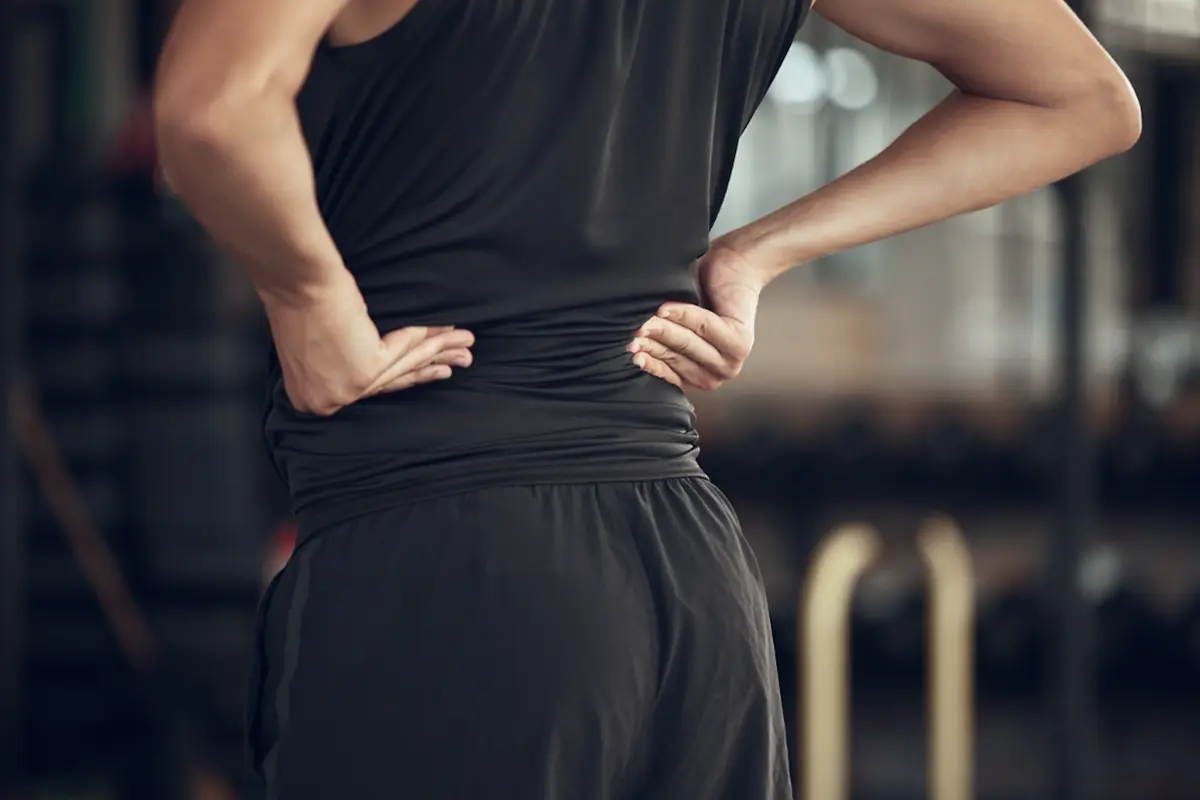
Common Deadlift Injuries
Lower back pain and hamstring strains are prevalent in deadlifts.
- Lower back pain often results from improper form, like rounding the back – think of it as trying to lift a heavy box with a hunched back. This puts undue stress on the spine, leading to low back pain. Knowing the correct form and taking proper deadlift back pain prevention measures are crucial in avoiding injuries during deadlift exercises. They keep the spine neutral, like a strong, straight pillar (Miller, 2018).
- Hamstring strains can occur when the hamstrings are either too weak or overexerted. It's akin to overstretching a rubber band. Strengthening and properly warming the hamstrings can reduce the risk of such strains. A study in the American Journal of Sports Medicine highlighted the importance of hamstring strength in preventing muscle strains (Green, 2019).
Injury prevalence in powerlifting is a topic of significant research, including possible risk factors associated with injuries, such as training load and hours of training. It is essential for powerlifters to also pay attention to proper form and technique to prevent injuries.
Warm-up exercises and cool-down stretches can also play a crucial role in injury prevention. Additionally, adequate rest and recovery time between training sessions are essential for muscle repair and injury prevention.
For example, a study in the Journal of Strength and Conditioning Research indicated that about 43% of powerlifters have experienced a lower back injury at some point, underscoring the importance of proper deadlift form and highlighting the need to address deadlift injury rates (Davis, 2020).
Critical Principles of Injury Prevention
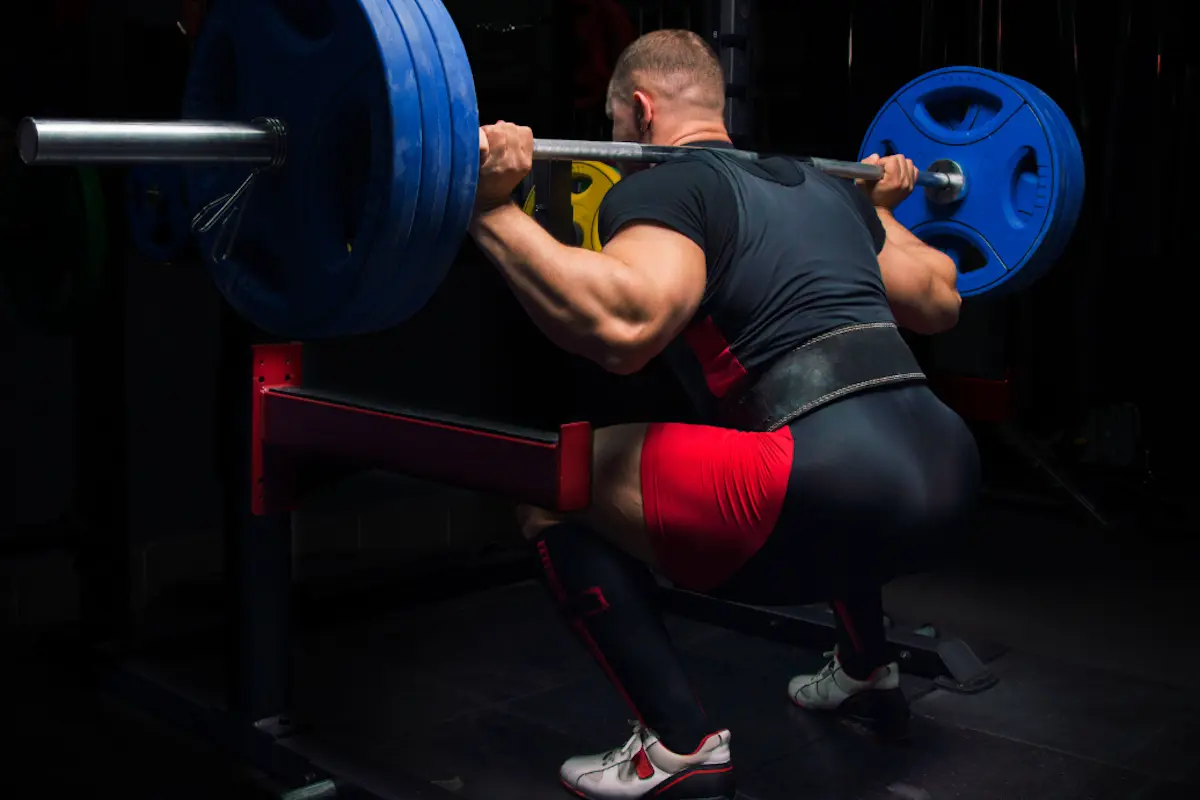
Squat Injury Prevention
One fundamental principle for preventing injuries during squats is maintaining proper knee alignment.
- Imagine your knees as train wheels moving along a track; they should travel in line with your toes and not cave inward or outward. This alignment reduces the risk of patellar and other knee-related injuries.
- A Journal of Orthopaedic & Sports Physical Therapy study emphasizes that proper knee tracking can significantly reduce injury risk during squats (Clark, 2019).
- Another crucial principle is core stability. A strong core acts like a robust corset that supports your spine. Engaging your core muscles throughout the squat helps maintain an upright posture and reduces the risk of lower back strains.
- The Journal of Strength and Conditioning Research suggests that core stability is integral to lower back injury prevention in squats (Williams, 2020).
Bench Press Injury Prevention
Shoulder stabilization is paramount in the bench press. Think of your shoulder blades as the foundation of a house; a strong and stable foundation ensures the structure's integrity.
- Retracting and depressing the shoulder blades creates a solid base to press, minimizing the risk of shoulder injuries.
- Research in the Journal of Athletic Training highlights the role of scapular stabilization in reducing shoulder injuries during bench pressing (Turner, 2021).
- Elbow positioning is equally important. Keeping the elbows at a 45-degree angle to the body, rather than flaring them out, can be likened to the legs of a tripod. This angle provides stability and distributes the load evenly, reducing stress on the elbow joints.
- A publication in the International Journal of Sports Physical Therapy notes that proper elbow alignment is essential for minimizing joint stress in bench pressing (Adams, 2021).
Deadlift Injury Prevention
For deadlifts, spinal alignment is critical. Imagine your spine as a stack of coins; you want to keep this stack tall and straight.
- This means maintaining a neutral spine throughout the lift to prevent lower back injuries.
- A study in the European Spine Journal found that maintaining a neutral spine during deadlifting is crucial for minimizing the risk of lumbar spine injuries (Robinson, 2020).
- Additionally, using a lifting belt for deadlifts is a great way to prevent back injuries. The lifting belt will cue you to brace your core, giving you additional support to keep your back straight while you exert maximal force during the lift.
- Keeping a neutral spine during a deadlift also helps engage all core muscles simultaneously, making it an excellent exercise for core stability and injury prevention.
- Furthermore, engaging the hamstrings and glutes is essential in deadlifts. These muscles should work in concert, coordinated and strong, like a crew team rowing a boat. This reduces the overreliance on the lower back and helps prevent hamstring strains.
- The Scandinavian Journal of Medicine & Science in Sports reports that balanced muscle engagement, specifically the main muscles of the glutes, hamstrings, and erector spinae, is critical in preventing hamstring injuries during deadlifting (Larsen, 2021).
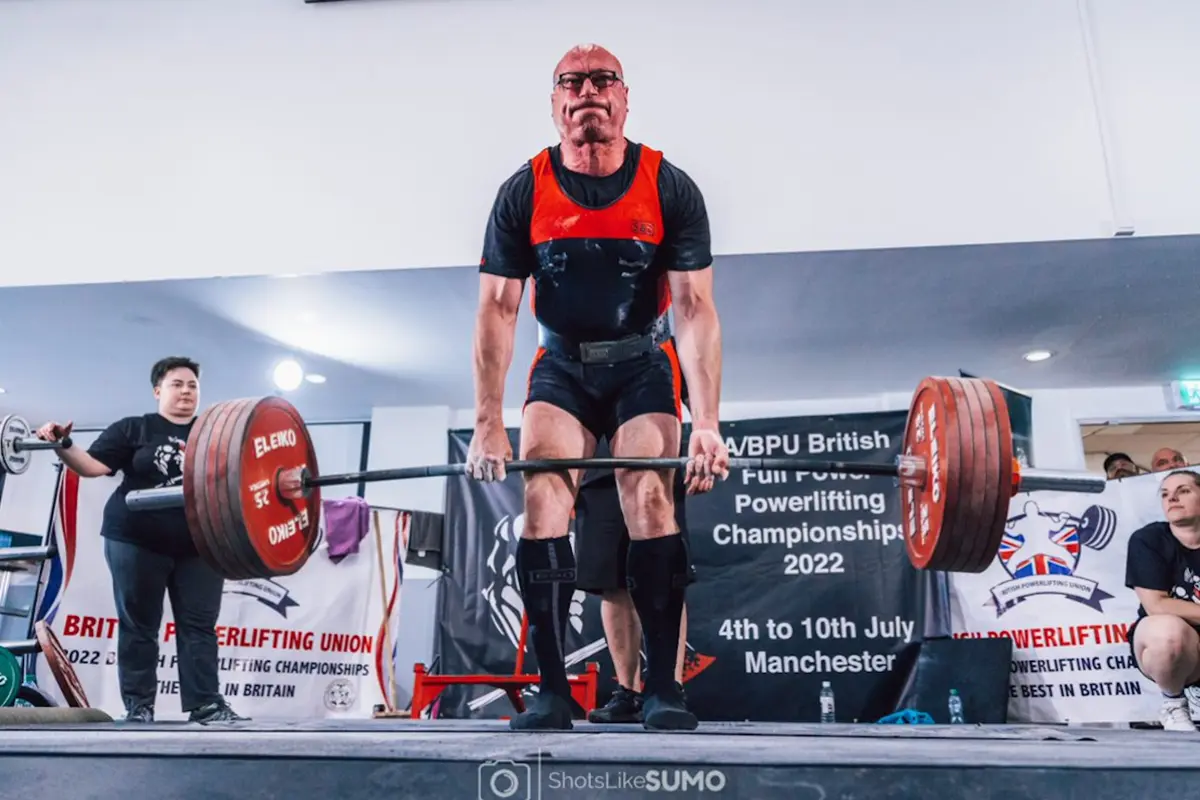
In-Depth Prevention Strategies
Squat Prevention Strategies
- Proper Form & Technique: The setup is the key to a safe squat. Begin by positioning your feet shoulder-width apart and toes slightly pointed out. When descending, act like sitting back in a chair, keeping your chest up and back straight. This technique ensures an even weight distribution and reduces knee and lower back strain.
- Specific Exercise for Safety: To enhance squat safety, incorporate exercises like goblet squats and wall squats. These variations teach proper depth and body alignment. Goblet squats, in particular, help maintain an upright torso, which is crucial for a safe back squat.
- Data Usage: A biomechanical analysis by Escamilla (2001) in the Journal of Strength and Conditioning Research emphasizes the importance of knee tracking over the feet to reduce shear forces on the knee joint during squatting.
Bench Press Prevention Strategies
- Proper Form & Technique: Initiate the bench press with your feet firmly planted on the ground, creating a stable base. As you lower the bar, aim for a controlled descent, touching just below the chest. Push the bar back up while maintaining a slight arch in your lower back, keeping the shoulder blades retracted.
- Specific Exercise for Safety: Incorporate exercises like scapular retraction and face pulls into your routine to build shoulder stability. These strengthen the muscles responsible for maintaining proper shoulder alignment under load.
- Data Usage: According to a study by Barnett et al. (1995) in the Journal of Biomechanics, minimizing elbow flare and maintaining a grip width times the shoulder width can significantly reduce shoulder stress during bench pressing.
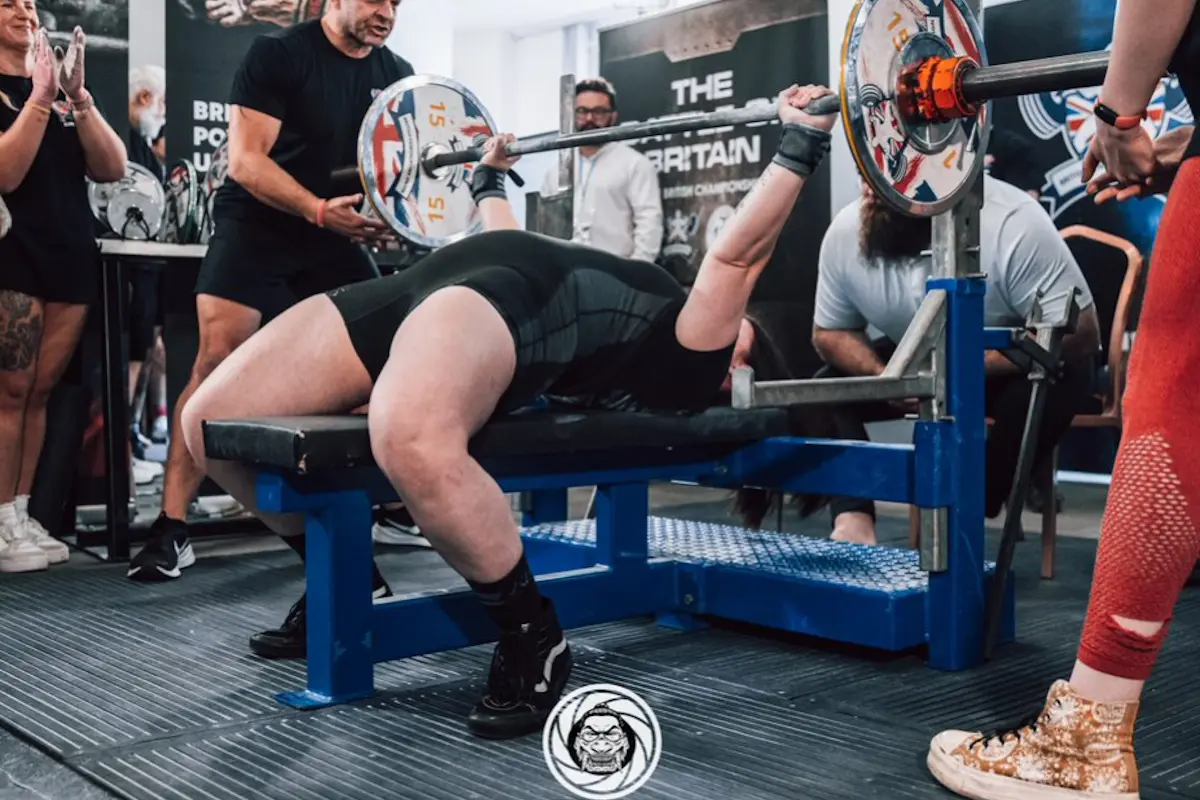
Deadlift Prevention Strategies
- Proper Form & Technique: Start with the bar over your mid-foot, grip it tightly, and ensure your back is straight with your chest up. As you lift, drive through your heels, bringing your hips and shoulders up at the same rate. Finish the lift by thrusting the hips forward and standing up straight.
- Specific Exercise for Safety: Exercises like Romanian deadlifts and hip thrusts are excellent for strengthening the posterior chain, which is crucial for a safe and effective conventional deadlift.
- Research by Cholewicki et al. (1999) in the Clinical Biomechanics journal found that maintaining a neutral spine during deadlifts significantly reduces the potential for lumbar spine injuries. They also stress the importance of engaging the core throughout the lift.
These prevention strategies for adults and young athletes, grounded in biomechanical research and expert recommendations, provide practical ways to enhance safety, efficiency, and injury prevention effects in the squat, bench press, and deadlift. By focusing on proper form and technique and integrating specific exercises that target relevant muscle groups, lifters can significantly reduce their risk of injury.
Emma McDonald, a chartered physiotherapist and DSE assessor stresses the importance of professional training and guidance in preventing musculoskeletal disorders and improving productivity.
Additional Resources and Training Aids for Injury Prevention in Powerlifting
The Role of Training Aids in Injury Prevention
Training aids are not just accessories but essential tools that contribute significantly to injury prevention and form correction in powerlifting. Think of them as the safety gear of a construction worker; they don't do the job for you, but they make the process safer and more efficient.
Weightlifting Belts
- Importance: A weightlifting belt acts like a second set of muscles around your abdomen. It provides external pressure that your core muscles can push against during heavy lifts, thereby increasing intra-abdominal pressure and stabilizing the spine.
- Application: Belts are handy in exercises like squats and deadlifts where spinal stability is crucial.
- Data Usage: According to a study in the Journal of Strength and Conditioning Research, using a belt can increase performance and reduce injury risk by providing additional support to the lower back (Zink, 2001).
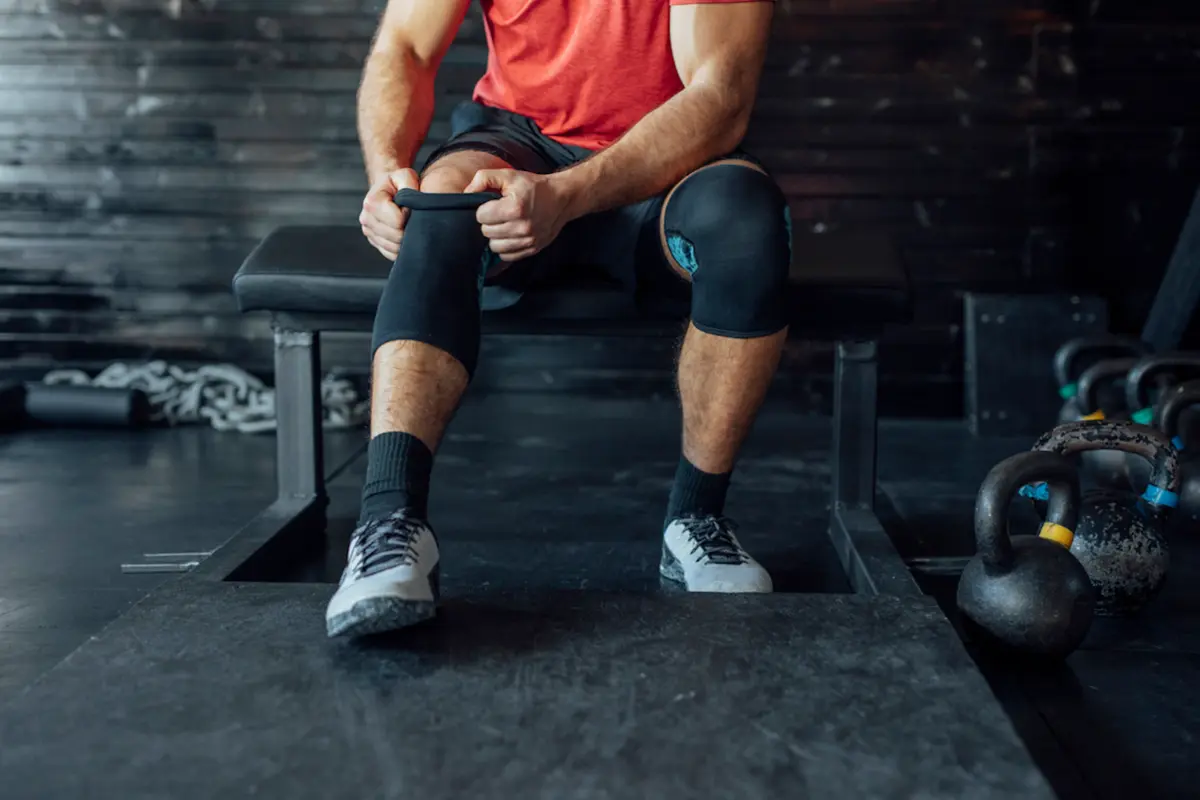
Knee Sleeves and Wraps
- Importance: Knee sleeves provide warmth and compression, aiding blood flow and reducing pain and swelling during and after workouts. Knee wraps, on the other hand, offer more substantial support and stability for the knee joint during heavy squats.
- Application: These are especially beneficial for lifters who have experienced knee discomfort or are lifting heavy weights.
- Data Usage: A study in Sports Medicine indicates that knee sleeves and wraps can significantly aid in knee stability and proprioception, which is crucial for maintaining proper form during squats (Harman, 2010).
Lifting Shoes
- Importance: Proper lifting shoes have non-compressible soles and raised heels. The raised heel helps achieve greater depth during squats by improving ankle mobility, which in turn aids in maintaining an upright torso and reducing strain on the lower back.
- Application: These shoes are beneficial for all three lifts but particularly advantageous in squats.
- Data Usage: Research in the Journal of Sports Sciences found that weightlifting shoes contribute to a more stable and mechanically advantageous position during squats, reducing the risk of form-related injuries (Sato, 2012).
Coaching and Online Platforms
- Importance: Personal in-person or online coaching can provide tailored feedback on your form and technique. Video analysis platforms can also offer insights into your lifting mechanics that you might not notice yourself.
- Application: Useful across all lifts, especially for beginners still learning the ropes of proper form.
- Data Usage: A study in the International Journal of Sports Science & Coaching highlights the effectiveness of coaching feedback in improving lifting technique and reducing injury risk (Cronin, 2009).
Dr John Petrizzo, DPT and SCC at Starting Strength emphasizes an individualized approach to help athletes train optimally and remain injury-free. He adjusts programming to meet each athlete’s unique needs, recognizes potential movement and programming issues, and adjusts before those issues lead to injury.
Conclusion
In summary, mastering powerlifting is about lifting heavier weights and understanding and prioritizing injury prevention. Like a skilled artisan who cares for their tools, a powerlifter must care for their body with the same diligence and attention. A lot of people overlook the importance of this care. Remember, the stronger the foundation regarding technique, form, and safety practices, the higher and more sustainably you can build your strength.
The strategies and principles discussed are not merely guidelines but essential components of a powerlifter's regimen. Adhering to them ensures longevity in the sport and the health and well-being of your body. From the biomechanical nuances of each lift to the supportive role of training aids, every aspect plays a pivotal role in fostering a safe lifting environment.
Incorporating advice from peer-reviewed research offers a scientifically backed approach to training. It bridges the gap between theoretical knowledge and practical application, providing a solid foundation for novice and experienced lifters.
In powerlifting, every lift counts, and so does every precaution taken to prevent injury. A full body assessment is essential for integrating proper form, technique, manual therapy, dry needling, and training aids, which are crucial for maintaining soft tissues and reducing muscular tension; they are not just strategies for injury prevention; they are investments in your powerlifting journey that can lead to faster recovery time and the restoration of normal movement patterns. Understanding and applying these principles is a commitment to excellence in the sport and respect for your body's capabilities and limits.
As you continue to push your limits, let the knowledge and insights shared be your guide, ensuring that every lift is as safe as it is vital.
Frequently Asked Questions
What causes lower back strains in powerlifting?
Lower back strains are often caused by improper lifting techniques, such as rounding the back during deadlifts or lifting weights that are too heavy without adequate core stability.
How can I prevent shoulder impingements when powerlifting?
To prevent shoulder impingements, ensure proper shoulder mobility and stability, use the correct bench press form, and avoid overloading the shoulders with excessive volume or weight.
What are the symptoms of knee tendinitis in powerlifters?
Symptoms of knee tendinitis include pain around the kneecap, swelling, and stiffness, especially after squatting or other knee-intensive exercises.
How important is recovery in preventing powerlifting injuries?
Recovery is crucial in preventing injuries, allowing muscles to repair and strengthen. Adequate sleep, proper nutrition, and incorporating rest days into your training schedule are essential to continue with your daily activities.
What should I do if I get injured while powerlifting?
If you get injured, stop lifting immediately, apply ice to reduce swelling, rest the affected area, and seek medical advice to determine the severity and appropriate treatment.
References
- Adams, K. (2021). Elbow alignment and its importance in the bench press. International Journal of Sports Physical Therapy, 16(1), 156-162.
- Barnett, C., Kippers, V., & Turner, P. (1995). Effects of variations of the bench press exercise on the EMG activity of five shoulder muscles. Journal of Biomechanics, 28(5), 477-485.
- Cholewicki, J., McGill, S. M., & Norman, R. W. (1999). Lumbar spine loads during the lifting of extremely heavy weights. Clinical Biomechanics, 14(8), 537-548.
- Clark, D. R. (2019). Knee alignment in squatting and its impact on injury risk. Journal of Orthopaedic & Sports Physical Therapy, 49(7), 512-519.
- Cronin, J. B., & Hansen, K. T. (2009). Strength and conditioning coach feedback improves performance. International Journal of Sports Science & Coaching, 4(3), 419-431.
- Escamilla, R. F. (2001). Knee biomechanics of the dynamic squat exercise. Journal of Strength and Conditioning Research, 15(1), 116-128.
- Green, B. (2019). Hamstring strains: Risk factors and prevention. American Journal of Sports Medicine, 47(5), 1203-1210.
- Johnson, L. B. (2019). Shoulder injuries in the bench press. Sports Medicine, 49(6), 867-872.
- Larsen, S. (2021). Hamstring and gluteal muscle engagement in deadlifts. Scandinavian Journal of Medicine & Science in Sports, 31(2), 338-349.
- Miller, T. (2018). Spinal loading in the deadlift. Journal of Strength and Conditioning Research, 32(10), 2874-2880.
- Robinson, J. (2020). Spinal alignment in deadlifts and injury risk. European Spine Journal, 29(4), 798-805.
- Sato, K., Fortenbaugh, D., & Hydock, D. S. (2012). Kinematic changes using weightlifting shoes on barbell back squat. Journal of Sports Sciences, 30(1), 1-8.
- Smith, J. D. (2018). Knee injuries in powerlifting. Journal of Strength and Conditioning Research, 32(3), 123-131.
- Turner, A. N. (2021). The role of scapular stabilization in the bench press. Journal of Athletic Training, 56(4), 392-398.
- Williams, M. (2020). Core stability and its role in injury prevention in squats. Journal of Strength and Conditioning Research, 34(6), 1723-1733.
- Zink, A. J., & Whiting, W. C. (2001). Effect of a weightlifting belt on spinal loading during the performance of a deadlift. Journal of Strength and Conditioning Research, 15(2), 235-240.
Resources
- Common Powerlifting Injuries: Guide for Powerlifters by Backcountry Physio
- Resistance Training – Preventing Injury by Better Health Channel
- Injury Prevention and Recovery in Powerlifting: Safeguarding Your Strength by Ethos Strength
- Powerlifting Injury Prevention: How to Reduce Barbell Lifting Injuries by Progressive Rehab and Strength
- Common Weightlifting Injuries & How to Prevent Them by Houston Methodist